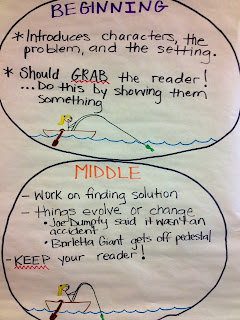As we move further into the year, I'm realizing the impact that having
continuous conversations around persevering and setting goals has on the
students.
The best way to connect with the
kids on these topics is through example.
We started out by looking at the above picture.
I explained that it’d been almost a year
since I was able to run, and that it took a lot of seemingly pointless/minor
exercises to get me to where I felt strong enough to attempt a run.
We discussed challenging ourselves to do the
labor- no matter how simple or difficult it may seem- so that we can then do
the fun stuff.
The skills of persevering
and honing grit are going to be tremendous assets to the kids for the rest of academic
careers.
Next we talked about how it felt the day of my first run- I was thrilled before
and during, but highly disappointed afterward.
In my mind I had set a goal of running 1 mile, and in reality I was
unable to reach it.
Defeated and
unsatisfied I hung my head (I showed the kids how I looked after my run).
When I did that, every student got wide eyes and a few said aloud things
like “don’t give up!” or “persevere!”
This allowed us to transition nicely into the conversation of what to do
when you hit a bump in the road- something that is an obstacle and makes you
feel like you “can’t”.
The discussion went on and the kids realized by looking at the picture that I
didn’t give up and eventually met my goal of 1 mile. We were then able to talk
about what would have happened had I accept defeat and not challenged myself
and the kids had great things to add.
Some
commented on how I was excited, then defeated, then excited again.
Others talked about how the littlest things
(stretches etc.) helped me get to “the big mile”.
Most importantly was the understanding that when you do your best, even if
you fall short and get defeated, you need to be satisfied.
If you are unsatisfied with your best, you create
mental bumps in the road that make it very difficult to persevere and try again.
The key is to balance satisfaction with motivation.
I am excited to help support you and your student set and reach their own
goals for the upcoming second quarter
J
 The students love standing around watching and conversing about the
crayfish.. they’re like little living magnets!
They’re terrific animals for us to study with fascinating
appearances. They’re quite bizarre with
an array of legs, appendages, and movements.
The students love standing around watching and conversing about the
crayfish.. they’re like little living magnets!
They’re terrific animals for us to study with fascinating
appearances. They’re quite bizarre with
an array of legs, appendages, and movements.




.JPG)


.jpg)








.JPG)


+-+Copy.jpg)
.JPG)
.png)
.jpg)
.JPG)


.JPG)